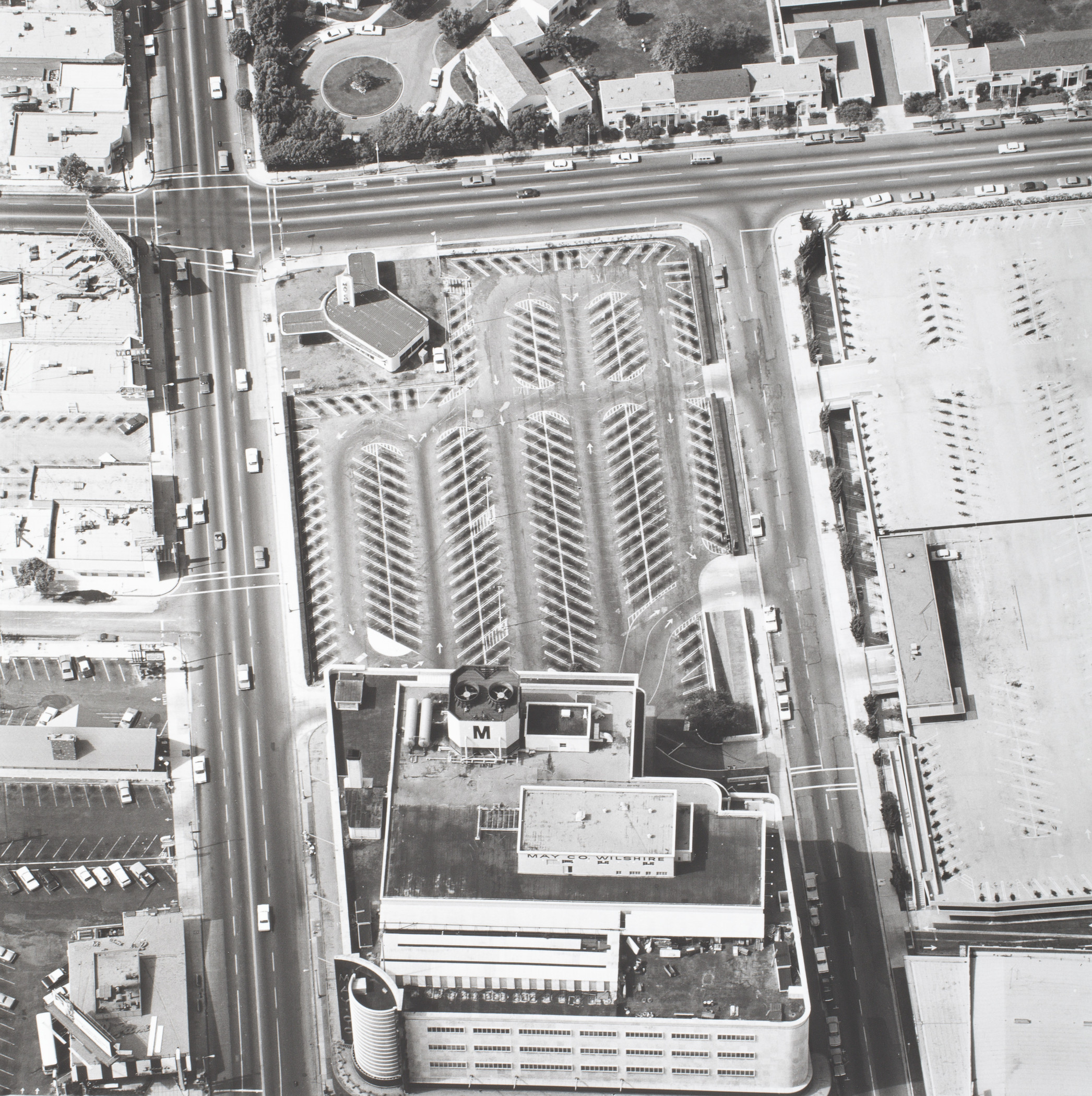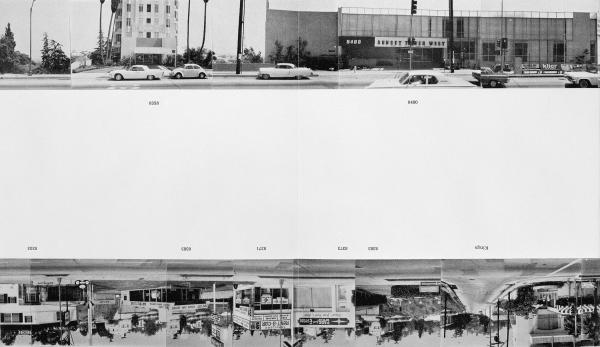In 1965, four decades before Google Street View began visually recording city streets around the globe, artist Ed Ruscha began his pioneering project Every Building on the Sunset Strip (1966). Setting out to photograph exactly what the title suggests, Ruscha, after some trial and error, mounted a modified, automated 35mm Nikon camera on a tripod in the bed of his pickup truck, drove up and down a mile and a half of the famous Los Angeles street to capture both a north and south view, and stitched together the resulting images into a continuous strip, publishing them as a accordion book.
“I looked at Sunset Boulevard like a 22-mile-long canvas, with an evolving history,” Ruscha said. “It had fluid motion, fluid stories, one long horizontal ribbon, and I always thought about it. It just asked to be documented.”
Every Building on the Sunset Strip was the beginning of a decades-long engagement with the streets of L.A., which the artist continued to travel through and document over the next 60 years. He created an extensive archive of photographs as well as records of his processes, with notebooks recording locations and times he and his team shot, usually early in the morning when there was less traffic on the roads. Ruscha eventually undertook over 130 photo shoots, capturing 750,000 images, more than 140,000 negatives of which the Getty Research Institute has been digitizing over the past decade. Many of these are now publicly available in their Streets of Los Angeles archive as well as the 12 Sunsets project, which allows users to virtually drive down Sunset Boulevard with photographs by Ruscha from 1965–2007. The GRI’s research project, which brought together urbanists, historians, and musicologists to explore Ruscha’s archive, is both a repository of Ruscha’s work and a visual history of Los Angeles and its changing cityscape.

These photographs are just part of Ruscha’s extensive practice, much of which is dedicated to surveying the built environment and iconic architecture of L.A. in new and unusual ways. Like Every Building on the Sunset Strip, other artist’s books like Some Los Angeles Apartments (1965) and A Few Palm Trees (1971), for example, feature photographs of aspects of the city made clear in their titles. Thirtyfour Parking Lots in Los Angeles (1967) presents aerial views of empty parking lots belonging to department stores, universities, and workplaces, taken from a helicopter. Many of Ruscha’s paintings also take inspiration from Los Angeles landmarks like the Hollywood sign, which sits under a blazing orange sky in Hollywood (1968).
On Saturday, June 15, inspired by Every Building on the Sunset Strip and more works from Ruscha’s 60-year retrospective ED RUSCHA / NOW THEN, cultural historian Josh Kun will lead a unique double-decker bus tour of Sunset Boulevard (from Poinsettia Place to N. El Centro Avenue), exploring its architecture and history of live music, co-presented with the Getty Research Institute. You can also see the book and other works capturing Los Angeles streetscapes in ED RUSCHA / NOW THEN, on view in BCAM, Level 2, through October 6, 2024.



